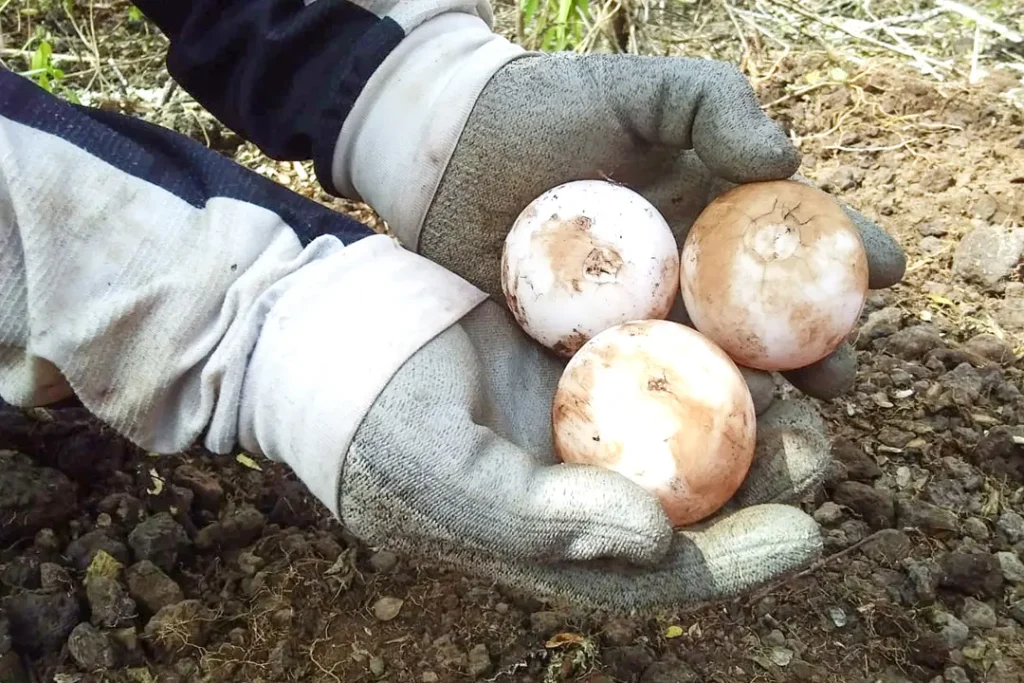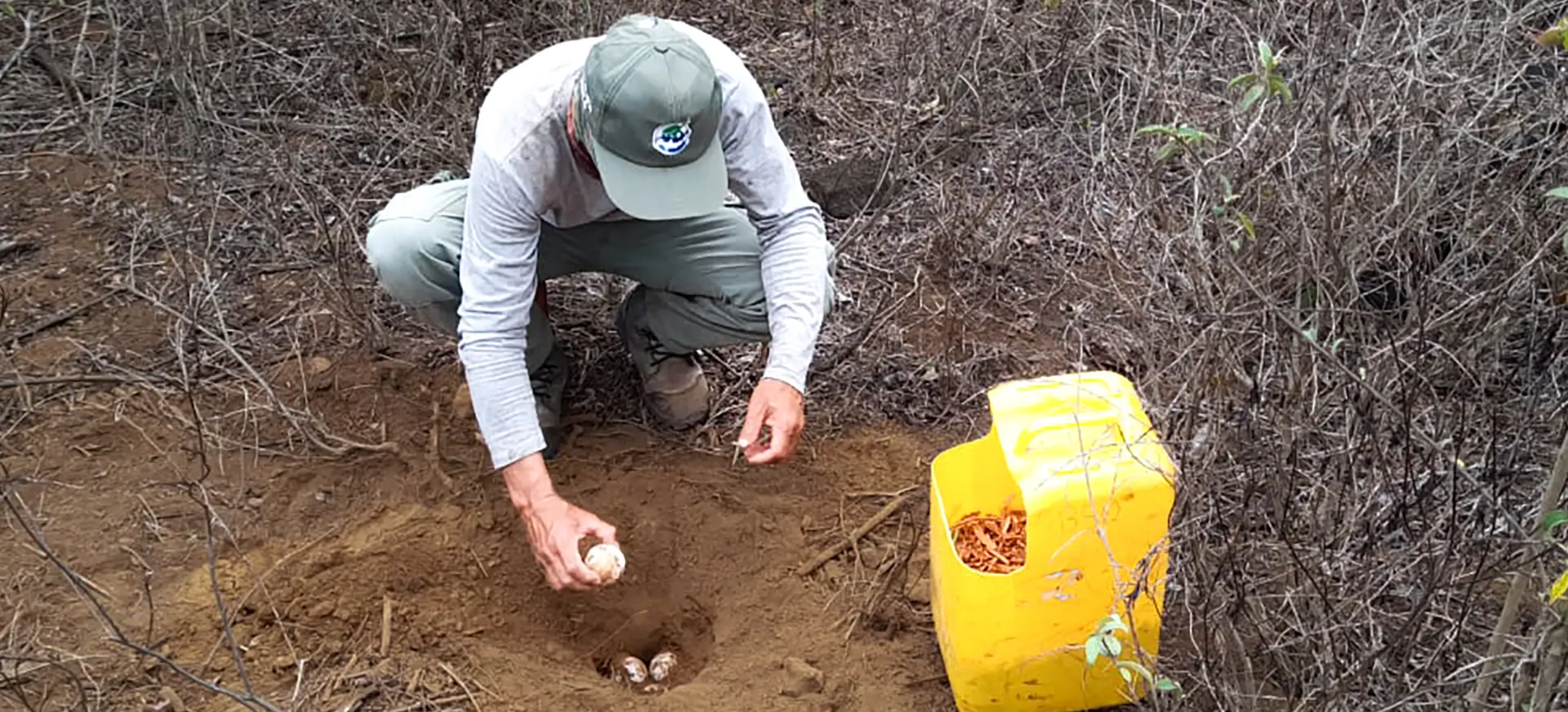Protecting the Galápagos Giant Tortoises on Isabela Island
Isabela Island, home to five of the twelve remaining species of Galápagos giant tortoises, is facing a serious challenge due to invasive species that threaten the survival of these iconic creatures. In collaboration with the Galápagos National Park Directorate (DPNG), we have launched critical conservation initiatives to safeguard the tortoise populations in the island’s southern regions. These efforts are focused on managing invasive species and supporting the recovery of these extraordinary reptiles.
Addressing the Impact of Invasive Species
A recent census of the eleven remaining tortoise populations in southern Isabela revealed a troubling pattern: the lack of young tortoises. This is primarily due to invasive species such as cattle, feral pigs, and fire ants. Cattle compete with tortoises for food, while feral pigs destroy eggs and prey on hatchlings. Fire ants attack both hatchlings and adult females, especially during egg-laying.
In response, we have intensified efforts with the DPNG to control invasive species and relocate tortoise eggs to the Breeding Center. This practice, which had been halted for over 12 years due to difficult terrain, is essential for rebuilding tortoise populations.
Planning for the Future
Relocating eggs is a crucial step to ensure the survival of giant tortoises. In the wild, nearly all eggs are destroyed by predators, but nearly 100% survive in controlled conditions at the Breeding Center. By carefully collecting and incubating eggs, we can bolster wild populations and maintain genetic diversity, which is vital for the tortoises’ ability to adapt to environmental changes.
In the coming months, we will continue working with park rangers to monitor nesting sites and protect them from invasive species. These actions not only help safeguard the tortoises but also promote the overall health of their ecosystem.
Achievements and Progress
This year, we conducted 15 expeditions to remote nesting areas, including Roca Unión and San Pedro on Sierra Negra Volcano. These efforts led to the collection of 72 eggs and two hatchlings: 45 eggs from San Pedro and 27 from Roca Unión, along with one hatchling from each site. The eggs and hatchlings were transported to the “Arnaldo Tupiza” Breeding Center on Isabela Island, where they will be cared for as part of the Galápagos Initiative. This initiative, a partnership between the Galápagos Conservancy and the DPNG, aims to restore giant tortoise populations to their historic numbers and ranges.
A Call to Action
The partnership between the Galápagos Conservancy and the Galápagos National Park Directorate demonstrates how strategic collaboration can create meaningful change for critically endangered species. With the continued support of our contributors, we can expand these vital conservation efforts to protect the Galápagos’ unique biodiversity. Together, we can ensure a future for the Sierra Negra giant tortoises and preserve one of the world’s most extraordinary natural treasures. Thank you for being part of this critical mission.




